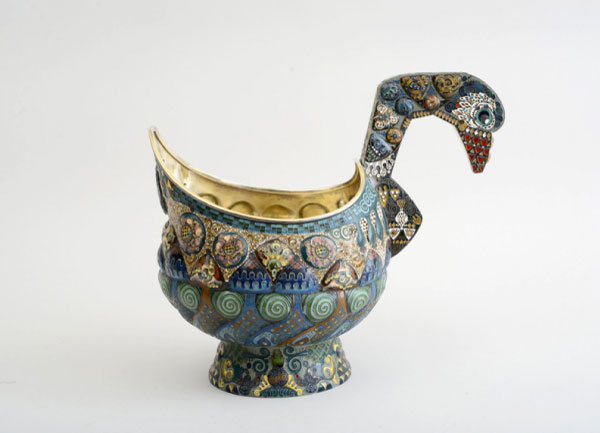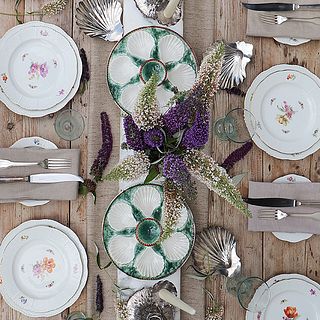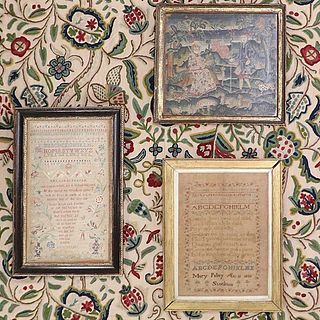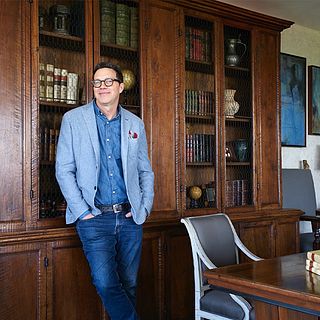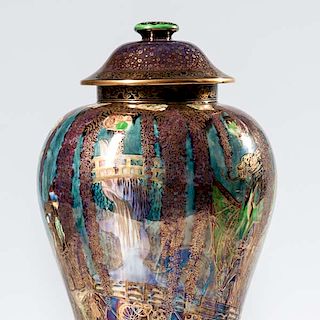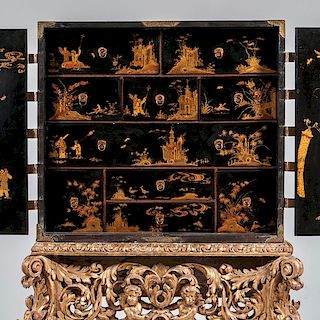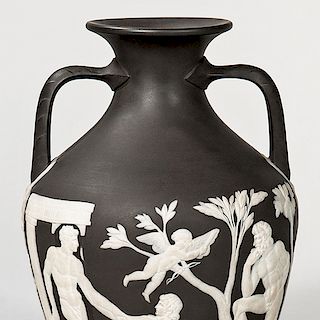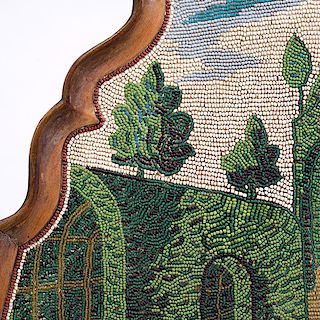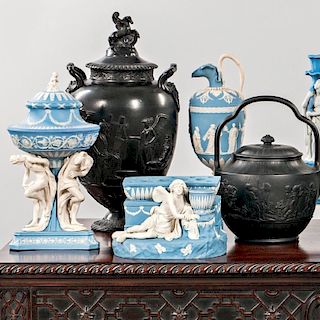Trophies at a Gallop
Descendants of the Gilded Age horseman and industrialist C. K. G. Billings will auction one of his luxurious racing trophies that had long sat boxed in a closet. It will be offered on May 1 at Stair Galleries in Hudson, N.Y. (with an estimate of $80,000 to $120,000). An enameled silver vessel the size of a punch bowl, made around 1909 by Fabergé, it is shaped like a traditional Russian drinking container known as a kovsh. Its handle is modeled after the head and neck of a goose with a speckled beak and a glaring expression, and its rim flares like a bird’s tail. The designer, Feodor Rückert, covered it in his signature swirls of Russian folk floral patterns, checkerboards and spirals.
An enameled silver vessel made around 1909 by Fabergé, to be offered on May 1 at Stair Galleries
Mr. Billings received it as a present from the czar’s court during a 1909 visit to Russia. He had traveled there with an entourage of staff members and harness racehorses, including a champion mare named Lou Dillon. The gift has remained in its original oak case, inscribed in gratitude for the tycoon’s visit and “the run of his queen of trotters Lou Dillon.”
He was also given another Fabergé bowl in kovsh form, with an embossed silver shell. That piece, which belonged to the Harness Racing Museum & Hall of Fame in Goshen, N.Y., was stolen in 2012 during a rash of thefts of sports trophies in New York and New Jersey Rebecca Howard, the museum’s collections curator, said there had been jokes that the thief or thieves was “somebody who’d never won anything.”
Albums and artifacts from the 1909 trip survive in the collections of descendants of the journalist Murray Howe, who was part of the Billings group. Mr. Howe photographed and wrote about Russian racetracks, stables, horses, elegant crowds on grandstands, peasants, peddlers and Fabergé gifts. A great-grandson, Andrew Murray Howe V, a real estate developer in Jacksonville, Fla., wears his forebear’s monogrammed gold ring made by a jeweler who worked for the czar. Mr. Howe has created a traveling exhibition of the 1909 photos, titled “Empire and Empathy.”
Read the full article in the New York Times here.
- A Celebration of Sports History and Collectibles
- Antiques and the Arts Weekly Q&A: Allis Ghim
- The Thrill of Sports Memorabilia Auctions: A Collector’s Paradise
- Demystifying Coin Condition: A Guide to the Sheldon Grading Scale
- Snoopy & Friends: A “Peanuts” Auction at Revere
- Colorful Chinese Monochromes at Millea Bros
- 12 Holiday Gifts for the “Impossible to Buy For” on Bidsquare
- Alluring Art Objects and Accessories from the Estate of Chara Schreyer
- Kimball Sterling's One-Owner Outsider and Folk Art Collection Showcases Masters of the Unconventional
- The Moke Mokotoff Collection of Asian Art at Stair



 EUR
EUR CAD
CAD AUD
AUD GBP
GBP MXN
MXN HKD
HKD CNY
CNY MYR
MYR SEK
SEK SGD
SGD CHF
CHF THB
THB